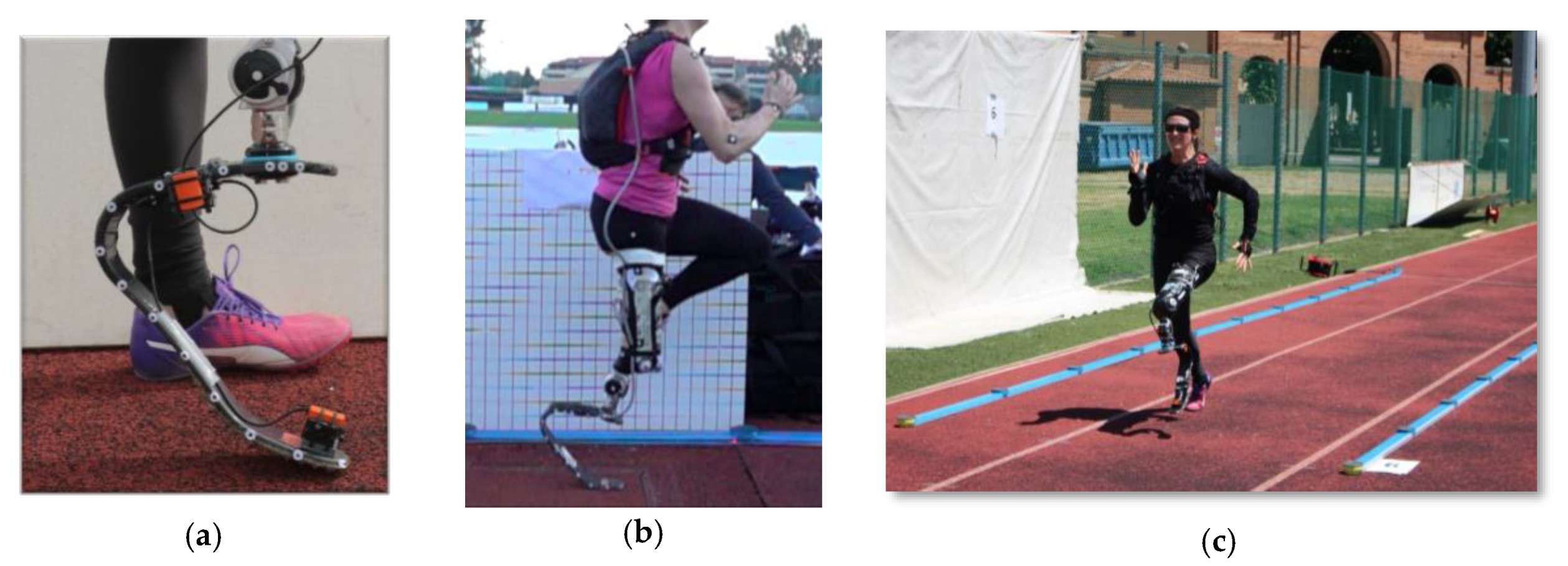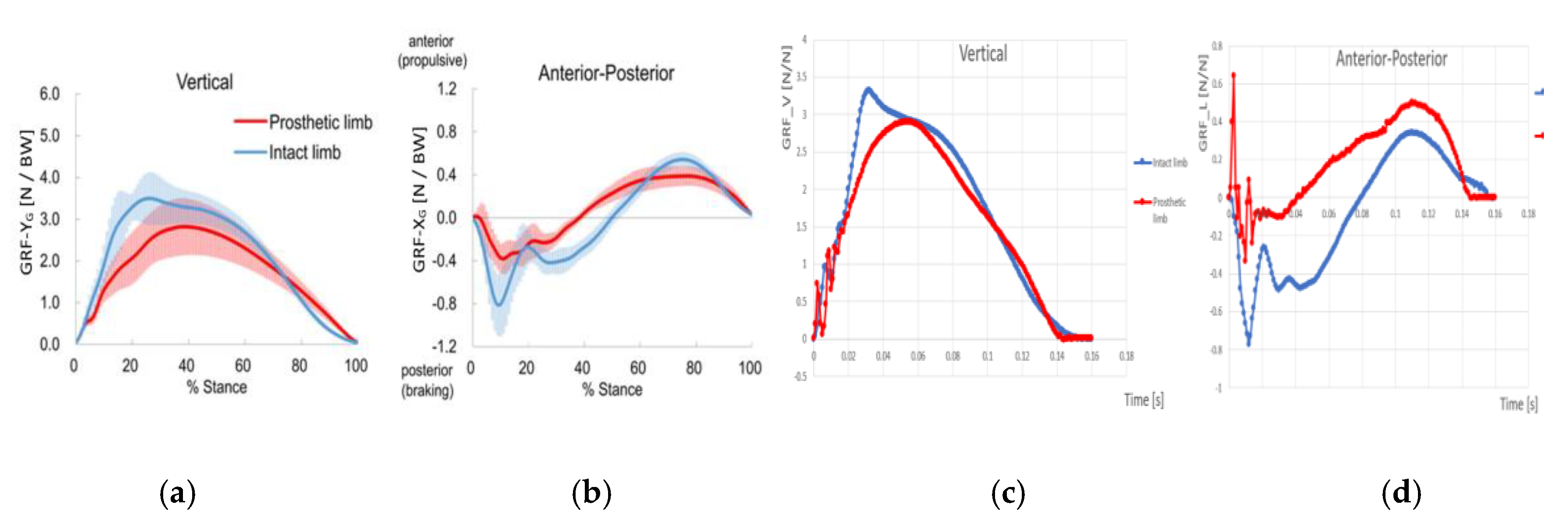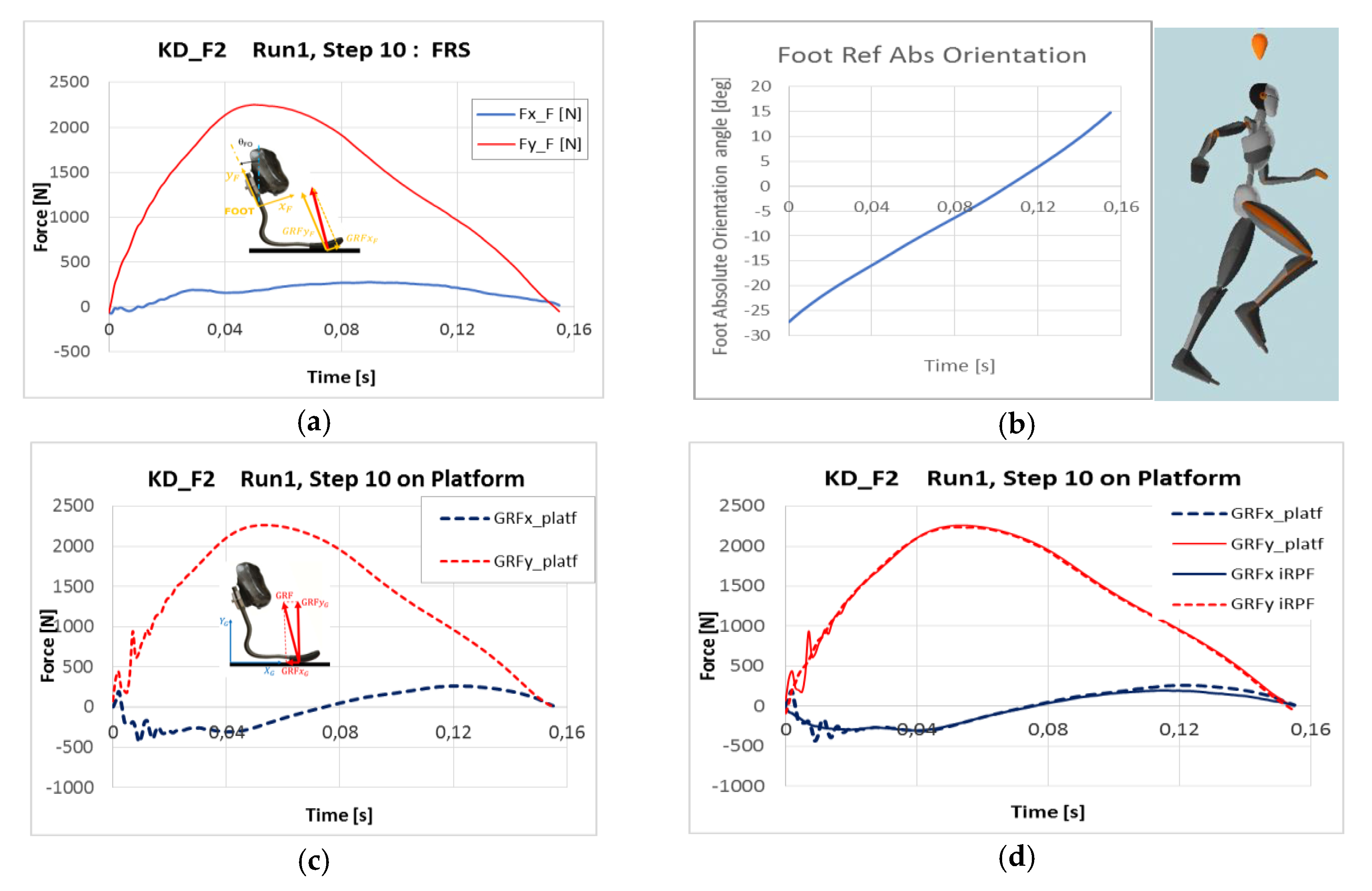Collection of Structural Loads Acting on Instrumented Running Specific Prostheses during Field Tests on Elite Atletes †
Abstract
:1. Introduction
2. Materials and Methods
2.1. Development of the Instrumented Running Prosthetic Foot (iRPF)
2.2. Field Tests
3. Results
4. Discussion
5. Conclusions
Acknowledgments
Conflicts of Interest
References
- Brüggemann, G.; Arampatzis, A.; Emrich, F.; Potthast, W. Biomechanics of double transtibial amputee sprinting using dedicated sprinting prostheses. Sports Technol. 2008, 1, 220–227. [Google Scholar] [CrossRef]
- Grabowski, A.M.; McGowan, C.P.; McDermott, W.J.; Beale, M.T.; Kram, R.; Herr, H.M. Running-specific prostheses limit ground-force during sprinting. Biol. Lett. 2009, 6, 201–204. [Google Scholar] [CrossRef] [PubMed]
- Weyand, P.G.; Bundle, M.W.; McGowan, C.P.; Grabowski, A.M.; Brown, M.B.; Kram, R.; Herr, H. The fastest runner on artificial legs: Different limbs, similar function? J. Appl. Physiol. 2009, 107, 903–911. [Google Scholar] [CrossRef] [PubMed]
- Hobara, H.; Baum, B.S.; Kwon, H.-J.; Miller, R.H.; Ogata, T.; Kim, Y.H.; Shim, J.K. Amputee locomotion: Spring-like leg behavior and stiffness regulation using running-specific prostheses. J. Biomech. 2013, 46, 2483–2489. [Google Scholar] [CrossRef] [PubMed]
- Nagahara, R.; Mizutani, M.; Matsuo, A.; Kanehisa, H.; Fukunaga, T. Association of Sprint Performance with Ground Reaction Forces During Acceleration and Maximal Speed Phases in a Single Sprint. J. Appl. Biomech. 2018, 34, 104–110. [Google Scholar] [CrossRef] [PubMed]
- Makimoto, A.; Sano, Y.; Hashizume, S.; Murai, A.; Kobayashi, Y.; Takemura, H.; Hobara, H. Ground Reaction Forces During Sprinting in Unilateral Transfemoral Amputees. J. Appl. Biomech. 2017, 33, 406–409. [Google Scholar] [CrossRef] [PubMed]
- Petrone, N.; Costa, G.; Foscan, G.; Bettella, B.; Migliore, G.; Cutti, A.G. Conceptual design of a new multi-component test bench for the dynamic characterization of running specific prostheses. In Proceedings 2020 MDPI; CH: Basel, Switzerland, 2020. [Google Scholar]
- Bezodis, N.E.; Willwacher, S.; Salo, A.I. The Biomechanics of the Track and Field Sprint Start: A Narrative Review. Sports Med. 2019, 49, 1345–1364. [Google Scholar] [CrossRef] [PubMed]







Publisher’s Note: MDPI stays neutral with regard to jurisdictional claims in published maps and institutional affiliations. |
© 2020 by the authors. Licensee MDPI, Basel, Switzerland. This article is an open access article distributed under the terms and conditions of the Creative Commons Attribution (CC BY) license (https://creativecommons.org/licenses/by/4.0/).
Share and Cite
Petrone, N.; Costa, G.; Foscan, G.; Gri, A.; Boekestijn, R.; Migliore, G.; Cutti, A.G. Collection of Structural Loads Acting on Instrumented Running Specific Prostheses during Field Tests on Elite Atletes. Proceedings 2020, 49, 74. https://doi.org/10.3390/proceedings2020049074
Petrone N, Costa G, Foscan G, Gri A, Boekestijn R, Migliore G, Cutti AG. Collection of Structural Loads Acting on Instrumented Running Specific Prostheses during Field Tests on Elite Atletes. Proceedings. 2020; 49(1):74. https://doi.org/10.3390/proceedings2020049074
Chicago/Turabian StylePetrone, Nicola, Gianfabio Costa, Gianmario Foscan, Antonio Gri, Rosanne Boekestijn, Gianluca Migliore, and Andrea Giovanni Cutti. 2020. "Collection of Structural Loads Acting on Instrumented Running Specific Prostheses during Field Tests on Elite Atletes" Proceedings 49, no. 1: 74. https://doi.org/10.3390/proceedings2020049074
APA StylePetrone, N., Costa, G., Foscan, G., Gri, A., Boekestijn, R., Migliore, G., & Cutti, A. G. (2020). Collection of Structural Loads Acting on Instrumented Running Specific Prostheses during Field Tests on Elite Atletes. Proceedings, 49(1), 74. https://doi.org/10.3390/proceedings2020049074



